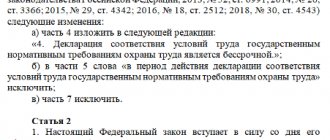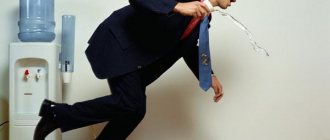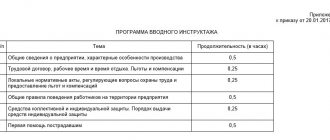SOUT 2021: innovations
On December 31, 2021, the transition period established by Law No. 426-FZ “On Special Assessment of Working Conditions” will end, during which each employer must conduct a special assessment of working conditions at their workplaces.
- Special assessment of working conditions (SOUT) instead of certification of workplaces according to working conditions (AWC)
- Priority is given to modern laboratory centers
- Innovations for 2021: continuation of the special assessment “with peculiarities”, extension of the deadline for fulfilling GIT regulations
- SOUT: risks and responsibilities
Frequency of certification
As a general rule, special assessment and assessment should be carried out at least once every five years (clause 4 of article 8 of Law No. 426-FZ). In this case, it is necessary to take into account special rules for the following cases:
- if the certification of workplaces was carried out before the entry into force of Law No. 426-FZ. Then 5 years are calculated from the date of the last workplace certification carried out by the employer before 01/01/2014.
- in relation to workplaces not specified in paragraph 6 of Article 27 of Law No. 426-FZ, the employer has the right to conduct it until December 31, 2018, which is confirmed by judicial practice (Decision of the Arkhangelsk Regional Court dated March 9, 2017 No. 7R- 143/2017).
Important!
Thus, if companies or individual entrepreneurs last carried out certification before 2013 inclusive, they must carry it out before the end of 2021, otherwise fines cannot be avoided.
From January 1, 2021, the “old” certification cards for special assessment of working conditions are no longer valid. Employers need to have SOUT results according to the rules established by Law No. 426-FZ.
Companies and individual entrepreneurs that have begun a phased assessment of working conditions must also complete it by the end of 2021.
STAFF RECRUITMENT
SOUT instead of automated workplace
On January 1, 2014, the previously existing procedure for certifying workplaces based on working conditions was replaced by SOUT, and for the fifth year now, Russian employers have been living in accordance with Law No. 426-FZ “On Special Assessment of Working Conditions.”
All employers are required to conduct an SAS at all their workplaces, regardless of their number, business size and type of activity. The following workplaces are not subject to this procedure:
- for whom “home-based” or “distance” workers are officially employed (that is, employees whose employment contracts contain appropriate mention of this nature of work);
- who employ workers who have entered into labor relations with employers - individuals who are not individual entrepreneurs (workers employed as personal servants - nannies, cleaners, maids)
A special assessment of working conditions is a single set of sequential measures to identify harmful or dangerous production factors and assess the level of their influence on employees. The sequence of the special assessment is given below.
The main task of the special assessment is to establish the “harmfulness” or “non-harmfulness” of workers’ working conditions, as well as to determine the range of guarantees and compensations that the employer, in accordance with the Labor Code, is obliged to provide to employees employed in workplaces with harmful or dangerous working conditions.
Priority is given to modern laboratory centers
Since a poorly performed assessment of working conditions may entail changes in the nomenclature and amount of guarantees and compensation provided to employees, for its implementation the legislation provides for the involvement of expert organizations accredited by the Ministry of Labor, which have at least five experts on labor safety standards on staff, and also include in their structure accredited Federal Accreditation Service (Rosaccreditation) testing laboratories (centers), with the last condition being the main one.
By the way, many of these centers have already felt the stringency of the requirements of RosAccreditation: The Register of Testing Laboratories regularly reports on the suspension of the accreditation certificates of certain laboratories or their exclusion from the number of operating ones. It was in 2021 that the number of such laboratories increased sharply. And since the deprivation of a laboratory’s accreditation certificate automatically means the termination of the Ministry of Labor’s accreditation for the right to perform a special assessment, it is obvious that 2021 is also the year of redistribution of the SOUT market. At the same time, employers should be very careful when choosing potential SOUT operators, giving preference to companies that have their own modern laboratory centers, and in addition, be prepared for an increase in the price of their services caused by a decrease in the number of players in this segment.
What jobs must be certified?
As a general rule, SOUTH includes the measurement of hazardous production factors during, for example, standard production processes.
SOUTH must be carried out at all workplaces, even those where there is no “harmful” factor (for example, the workplace of an accountant, manager, director), with some exceptions (see below). In relation to workplaces that are recognized as similar, it is sufficient to carry out an assessment assessment only for 20% of such workplaces (but not less than two workplaces). Therefore, the assessment results will be distributed automatically to other workplaces (Article 9 of Law No. 426-FZ).
Important!
For example, if a company employs six auditors who are in the same room and use the same equipment (computer, printer, etc.), then their jobs can be considered similar and instead of six, only two jobs can be assessed.
The jobs of a manager and an accountant (different functionality, positions) cannot be considered similar and the 20% rule (but not less than two jobs) does not apply in this case.
The results of the conducted assessment are valid for five years and in the absence of harmful working conditions (if no changes have occurred in the workplace), the validity period of the assessment is extended. But this does not apply to workplaces with a harmful and dangerous nature of production; in relation to such places, SOUT is carried out once every five years or more often (if we are talking about an unscheduled SOUT).
TAX LAWYER CONSULTATION
SOUT: risks and responsibilities
2018, the last of the transition period, will be very important for the market for special assessment of working conditions. As of the spring of 2021, according to the Ministry of Labor, the number of jobs that underwent SUT was 65% of the total number of jobs available in the Russian Federation.
In a letter dated June 1, addressed to the heads of the regions of the Russian Federation, the Ministry of Labor drew their attention to the need to complete the SOUT in full before December 31, 2021. Therefore, there is every reason to expect that the peak of orders for conducting SOUT will occur at the end of the year. Considering this fact, experts do not recommend overpaying, postponing this procedure until the last days of the current year or even next year, but rather contacting a specialized organization in advance that has a decent reputation and extensive experience in conducting a special assessment of working conditions.
Failure to carry out special assessments guarantees penalties in the amount of 5 to 200 thousand rubles and can lead to suspension of the organization’s activities for up to 90 days, and if a violation of labor protection requirements leads to serious harm to health or death of a person, the employer may also face criminal liability for Article 143 of the Criminal Code of the Russian Federation.
Unscheduled certification of workplaces
In a number of cases, employers are required to carry out unscheduled special labor and safety work (Article 17 of Law No. 426-FZ, letter of the Russian Labor Ministry dated November 20, 2015 No. 2628-6-1 “On working conditions in the workplace”). For example, this is necessary when changing the technological process, replacing production equipment, which can affect the level of exposure to harmful and (or) hazardous production factors on workers.
In addition, the need to conduct an unscheduled SOUT arises when:
- new jobs are created;
- the employer received orders from the state labor inspector to conduct an unscheduled special labor inspection (for example, they previously committed violations of labor legislation);
- the composition of the materials used and (or) raw materials that can influence the level of exposure to harmful and (or) hazardous production factors on workers changes;
- the applied personal and collective protective equipment is changing, which can influence the level of exposure to harmful and (or) hazardous production factors on workers;
- an industrial accident occurred at the workplace (with the exception of an industrial accident that occurred due to the fault of third parties) or an occupational disease was discovered, the causes of which were the employee’s exposure to harmful and (or) dangerous production factors;
- this is required by a trade union or other representative body of workers.
Important!
Unscheduled certification is carried out at the relevant workplaces within six months from the date of occurrence of these cases.
Fines for lack of certification of workplaces
Violation of the procedure for certification of workplaces or failure to carry it out entails (Part 2 of Article 5.27.1 of the Code of Administrative Offenses of the Russian Federation):
- warning or fine for officials from 5,000 to 10,000 rubles;
- fine for the employer-entrepreneur from 5,000 to 10,000 rubles;
- fine for the employer - company from 60,000 rubles to 80,000 rubles.
At the same time, the maximum amount of the fine (for a company - 80 thousand rubles) does not depend on the number of workplaces for which SOUT was not carried out (letter of the Rostrud of the Russian Federation dated November 28, 2016 No. PG/31983-03-3).
This means that if a company has not carried out special assessments for, for example, 2 out of 15 workplaces, then the maximum fine will be no more than 80,000 rubles.
Repeated violation entails the imposition of an administrative fine:
- against officials in the amount of thirty thousand to forty thousand rubles or disqualification for a period of one to three years;
- for legal entities - from one hundred thousand to two hundred thousand rubles or administrative suspension of activities for a period of up to ninety days.
Important!
In accordance with Art. 57 of the Labor Code of the Russian Federation, working conditions in the workplace are mandatory for inclusion in the employment contract. In this case, the determination of working conditions should be carried out on the basis of the results of a special assessment of working conditions.
In accordance with Part 4 of Art. 5.27 of the Code of Administrative Offenses of the Russian Federation, improper execution of an employment contract (including the absence of working conditions) entails the imposition of an administrative fine for each improperly executed employment contract:
- for officials in the amount of 10,000 to 20,000 rubles;
- for legal entities - from 50,000 to 100,000 rubles.
Repeated violation entails the imposition of administrative penalties:
- for officials - disqualification for a period of one to three years;
- for legal entities - from one hundred thousand to two hundred thousand rubles.
Conclusion
: the absence of SOUT entails administrative liability under two articles of the Code of Administrative Offenses simultaneously with the imposition of a fine under Article 5.27 and 5.27.1.
TAXES WHEN ISSUING MILK TO EMPLOYEES “FOR HARMFUL”
How to carry out SOUT
SOUT is carried out by the employer together with a specialized organization with which it is necessary to conclude an agreement. All organizations that have the right to conduct special assessments are included in the register of the Ministry of Labor.
For SOUT, a commission is created at the enterprise, which should include a labor protection specialist, if available. If there is no such person on staff, and the organization has less than 50 employees, the manager can assume his functions. (If the number of employees is more than 50, there must be an occupational safety specialist). The composition of the commission, the list of jobs being assessed and the special assessment schedule are approved by order of the manager.
During the special assessment, commission members and representatives of a specialized company visit workplaces and carry out the necessary technical measurements.
If the company has similar jobs, it is allowed to carry out SOUT for only 20% of them. In this case, similarity means not just the same conditions (for example, ventilation, heating, lighting) and equipment, but also the work of employees with the same positions, job functions and regime in these places.
The detailed procedure for carrying out the SOUT is set out in the step-by-step instructions from the legal portal “Garant”.
Preparatory stage
Before assessing working conditions, it is necessary to verify the authority of the control organization. To do this, find out:
Presence of the relevant type of activity in the organization’s charter;
Are there experts among the employees of the inspection institution who are certified to carry out special labor assessments;
Availability of an accredited laboratory for the analysis of hazardous production factors.
Following the selection of the inspection organization, it is necessary to draw up an agreement on the basis of which the examination is carried out. The contract should include the following information:
- Timing of research activities;
- List of rights and obligations of the parties;
- Payment method and full cost of verification;
- Responsibility for failure to comply with the terms of the contract;
- Warranty period for SOUT.
After the contract is concluded, the controlling organization will be able to begin the examination.
Stages of workplace certification
Stage 1. Search for a specialized company.
The employer carries out special assessment work together with a specialized organization engaged under a civil law agreement (clause 2 of article 8 of Law No. 426-FZ).
Important!
Not every organization can carry out SOUT. Requirements for such organizations are specified in Article 19 of Law No. 426-FZ. The list of organizations authorized to carry out SOUT is presented on the website of the Ministry of Labor of the Russian Federation ().
And the employer, when choosing an organization to conduct special labor safety measures, must make sure that it is included in the register of accredited organizations providing services in the field of labor protection.
Conducting an assessment assessment by an organization that does not meet the requirements of Article 19 of Law No. 426-FZ will lead to the recognition of the assessment report as invalid.
HR AUDIT
Stage 2. Formation of an internal commission for conducting special assessment and issuance of an order to conduct special assessment.
The order specifies the members of the commission (at least 3 people), determines the list of jobs for which certification is carried out, and establishes a schedule for conducting a special assessment.
Stage 3. Familiarization with the results of the SOUT carried out by a specialized company and preparation of the necessary documentation (report, act of completion of work, certification cards, etc.).
It is necessary to pay attention to the date of preparation and approval of the workplace certification report, since the completion date of the SOUT is the date of approval of the report - no later than December 31, 2021.
Stage 4. Familiarization of workers with the results of special labor safety measures and provision of additional guarantees and compensation (if working conditions were found to be harmful or dangerous).
From the date of approval of the SAW report, it is necessary to familiarize employees with the results of the assessment of their jobs within 30 calendar days. The specified period does not include periods of temporary incapacity for work of the employee, being on vacation or a business trip, periods of rest between shifts (Clause 5 of Article 15 of Law No. 426-FZ).
As practice shows, not all workers and employers agree with the results of the SAW. In the first case, the employee may lose a number of benefits and compensation, and in the second, the establishment of a high class necessitates the provision of benefits to the employee.
An employee who believes that his rights were violated during the special assessment work has the right to appeal the results of the special assessment in court (Article 5 of Law No. 426-FZ). In addition, before making a decision to conclude an employment contract, the employee must have reliable, updated information about the working conditions at his workplace. He can obtain such information only based on the results of a special assessment of working conditions from the card of a special assessment of working conditions of the workplace that will be provided to him (Decision of the Kemerovo Regional Court dated January 18, 2017 No. 21-7/2017).
HR SERVICES
Stage 5. Posting information about the conducted special assessment on the website of the company or individual entrepreneur (if available).
On the website of the company or individual entrepreneur, the results of the SOUT are posted, data on classes and subclasses of working conditions in the workplace are provided, as well as a list of measures to improve working conditions in the workplace.
Stage 6. Submitting a declaration of compliance of working conditions with standards to the labor inspectorate.
The declaration of compliance of working conditions with state regulatory requirements for labor protection is drawn up only in the form approved. Order of the Ministry of Labor of the Russian Federation dated 02/07/2014 No. 80n and is filled out on the basis of a report on the implementation of special assessment and assessment work.
The declaration indicates only those jobs that are recognized as optimal (class 1) or acceptable (class 2).
The deadline for filing the declaration is no later than 30 working days from the date of approval of the report by the employer.
Reflection of certification costs in tax and insurance reporting
Expenses for conducting special tax assessments are taken into account as other expenses (clause 7, clause 1, article 264 of the Tax Code of the Russian Federation) for taxpayers applying the general taxation regime.
“Simplers” cannot take such expenses into account due to the absence of such expenses in the closed list of expenses (clause 1 of Article 346.16 of the Tax Code of the Russian Federation, letters of the Federal Tax Service of the Russian Federation dated July 30, 2014 No. GD-4-3/14877 and the Ministry of Finance of the Russian Federation dated June 30, 2014 No. 03-11-09/31528).
In “insurance” reporting (in form 4-FSS, which is submitted to the territorial department of social insurance), the results of the SOUT are reflected in table 5 of form 4-FSS for the first quarter of 2021.
In terms of contributions to pension insurance, SOUT affects the additional tariff if harmful or dangerous working conditions are established.
DRAFTING AN EMPLOYMENT CONTRACT







